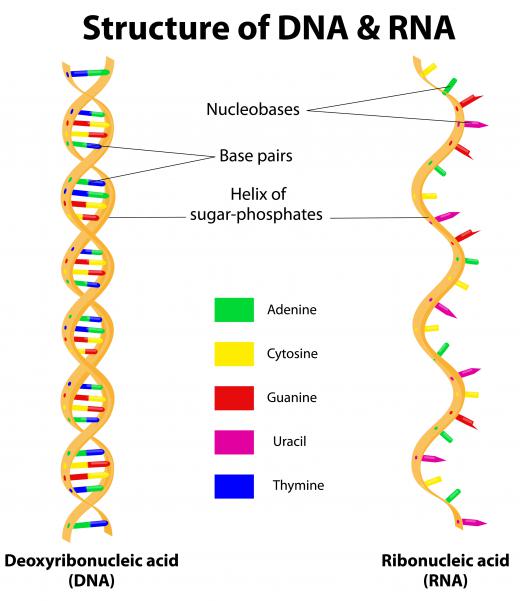What are Biopolymers?
 Michael Anissimov
Michael Anissimov
A biopolymer is any organic polymer. Biopolymers have been around for billions of years longer than synthetic polymers like plastics. Well-known biopolymers include starch, proteins and peptides, DNA, and RNA. Together these make up much of our bodies and the majority of the biosphere.
A polymer is any chainlike molecule composed of a repeating unit called a monomer. Monomers coalesce into polymers in a process called polymerization. The biopolymer of DNA is arguably the most important - it is the means by which body plans and their emerging behaviors are passed from parents to offspring.
The starch polymer is made up of sugar monomers. When you consume starch, it gets broken down into sugar within the body. Starch provides an extended-release form of nutrition in contrast to more quickly-metabolized sugars.

Protein and peptide biopolymers have amino acids as their constituents. This is why amino acids are often referred to as "the building blocks of life." DNA and RNA are made up of nucleic acids, which alternate in precise patterns to encode large quantities of data.
Biopolymers like polyester and starch-based polymers are being pushed as an environmentally friendly alternative to petroleum-based polymers, which may take thousands of years to biodegrade. Biopolymers can be produced without toxic byproducts and biodegrade quickly, leaving a minimal human footprint on the environment.

In contrast to synthetic polymers, biopolymers tend to have a well-defined structure. Perhaps this is because evolution tends to select for chemical reactions and structures that are largely predictable. Biopolymers have an evenly distributed set of molecular weights and are built using a template-directed process.
Polymers are very complex molecules. Modeling them well requires vast quantities of computing power. For this reason, we are only beginning to learn the precise details of the way biopolymers operate within the body. These polymers have complex folding patterns, including secondary and tertiary structures which emerge based on properties of the primary structure. In a sufficiently powerful microscope, a biopolymer looks like a rolled-up ball of string or a long wormy chain.
AS FEATURED ON:
AS FEATURED ON:












Discuss this Article
Post your comments